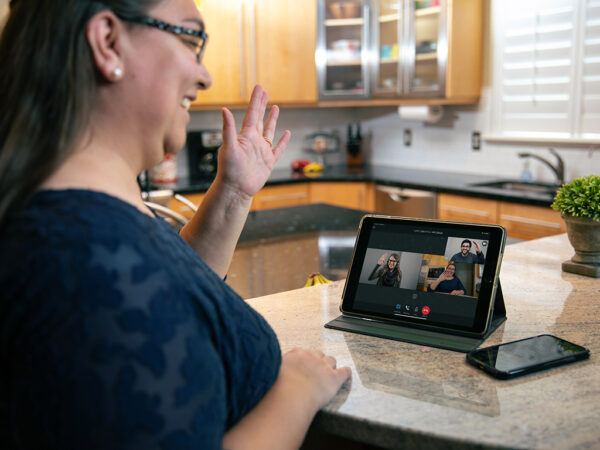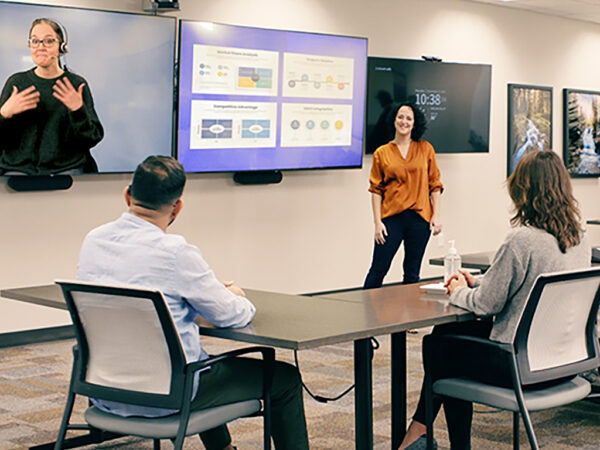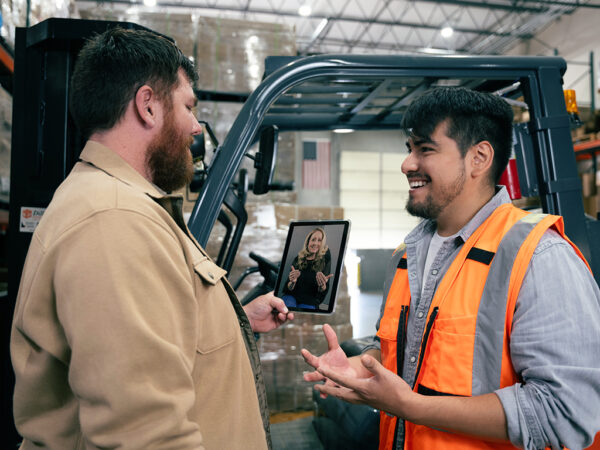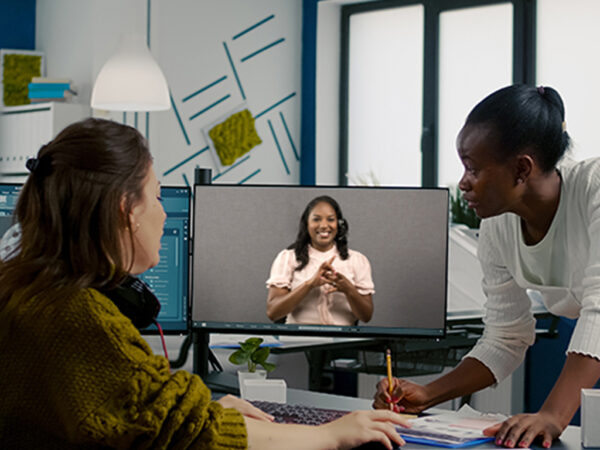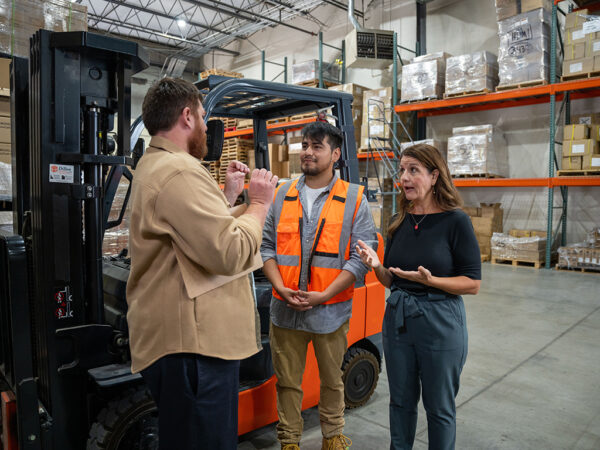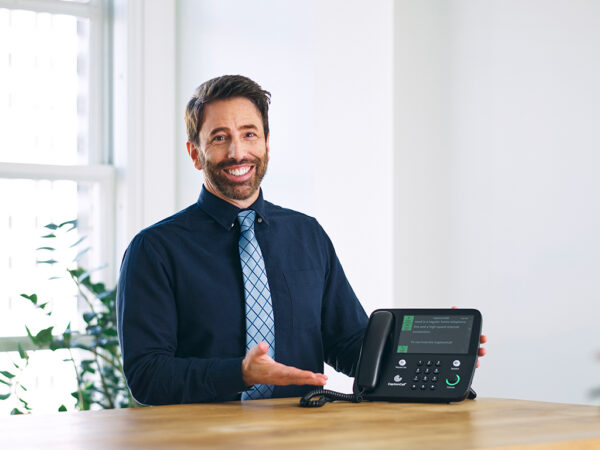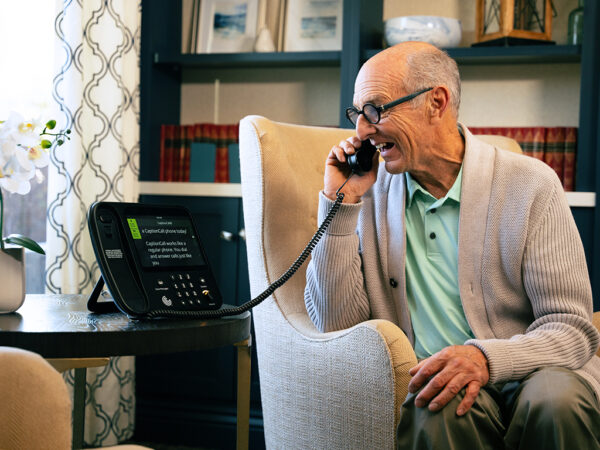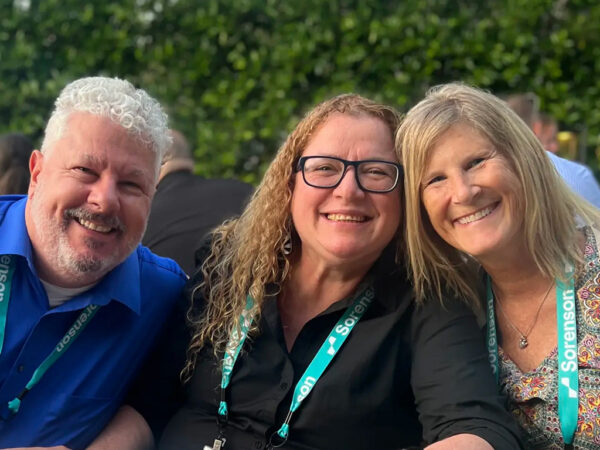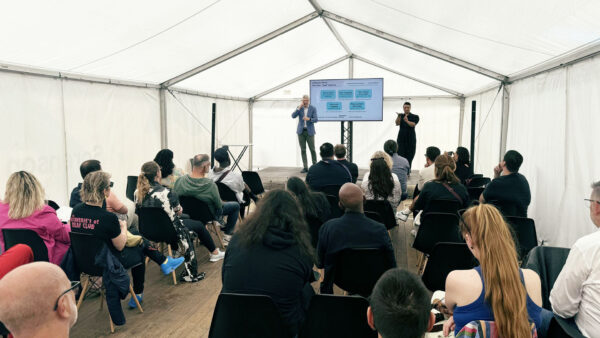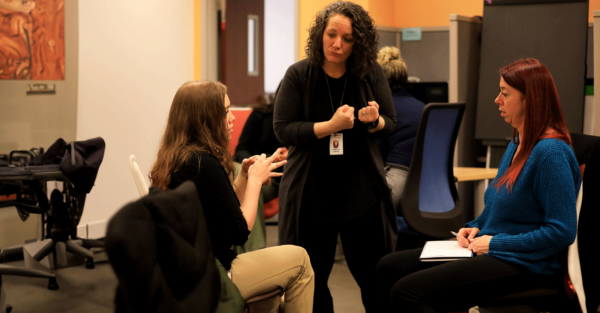Guidelines for Using an ASL Interpreter for Video Remote Interpreting
May 8, 2023

Guidelines for using a sign language interpreter
Guidelines for interpreted communication are a little different than same language conversations. Even people who have some experience using an interpreter may benefit from learning the best practices. Guidelines for interpreter use will vary slightly depending on what type of service you’re using. We’ve put together a guide to getting the best experience with an ASL interpreter for video remote interpreting (VRI) with tips for each step along the way:- Choosing the right interpreter services
- Preparing for your interaction with an ASL interpreter
- Learning and using interpreter etiquette
Sorenson’s interpreting expertise
Sorenson employs the largest private sign language interpreter workforce in the world, with a team of more than 6,000 interpreters globally. The company designed and operates the most comprehensive internal and external sign language interpreting training program on earth to develop top interpreter talent for its own team and other public and private entities for an exceptional customer experience. Our American Sign Language interpreting services include VRS, on-site interpreting, and video remote interpreting (VRI). Those services cover virtually any interpreting need: from medical settings to work meetings, in-person and online classes, conferences and conventions, closing on a home or booking a contractor for the renovations. Eligible Deaf individuals are welcome to sign up for VRS to request any of our video relay products. Deaf or hearing businesses and individuals interested in on-site or video remote interpreting can contact our team to discuss options and pricing or help you schedule service. Sorenson is also one of the largest employers of Deaf people in the U.S. Our employees use VRI and on-site interpreting daily for meetings between Deaf and hearing employees. Experts have vetted these guidelines for effective use of sign language interpreters. That’s why Amazon Web Services (AWS) is working with Sorenson to optimize its virtual training programs, implementing insights about making virtual learning accessible for Deaf and low-vision participants not only through content, but through effective use of VRI services for virtual classrooms.Choosing the right interpreter services
There are multiple factors to consider to determine whether video remote interpreting (VRI), on-site interpreting, or video relay service (VRS) is the best fit for your needs.
- Only Deaf individuals who communicate using sign language can have VRS accounts.
- Deaf and hearing people can only use VRS to communicate from separate locations; they can’t be in the same room/place.
- Interpreters must verify that an eligible Deaf individual is on the line for the entire VRS call, so the user can’t turn off their camera. That makes webinars ineligible for the service.
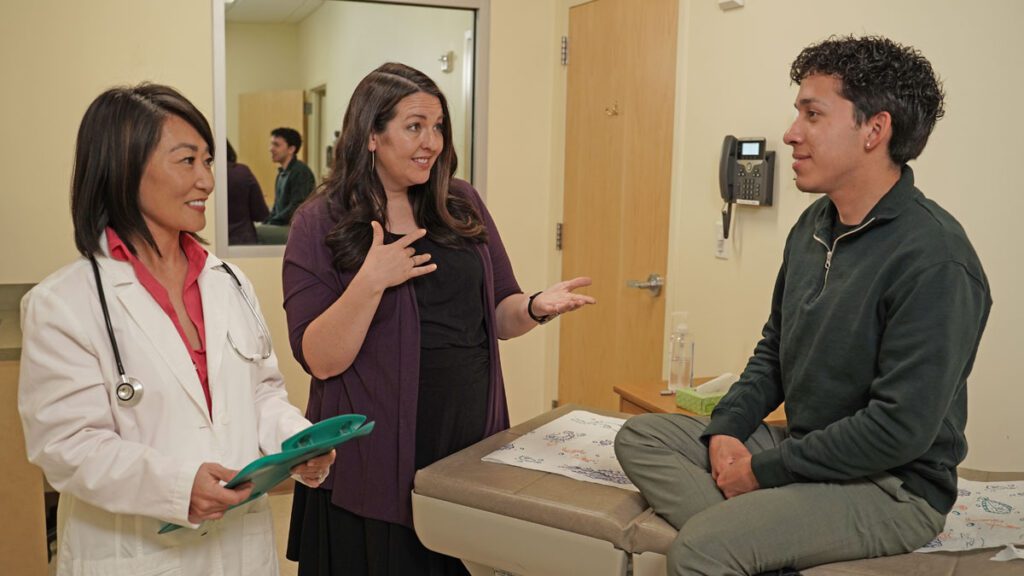
- In-person interpreting offers optimal interaction for face-to-face events, but also requires the most advance notice.
- Scheduling on-site interpreter services involves consideration for travel time and costs. Because of this, there may be a minimum session length for scheduling on-site services.
- On-site sign language interpreting is a fee-based service. Costs vary by provider.

- An ASL interpreter relays communication between signed and spoken languages over video through a high-speed internet connection.
- The Deaf and hearing individuals can be in the same location with a video screen or in different locations using videoconferencing software.
- VRI is a fee-based service, with costs varying by provider for scheduled or on-demand service options.
Preparing for interaction with an ASL interpreter using VRI
- Give your interpreting service provider information to suitably staff and plan for your session.
- Make arrangements for mutual visibility and audibility for everyone in your conversation and the sign language interpreter.
Part 1: providing information
When you schedule video remote interpreting service, your provider will review the details of your request to assign the right interpreter(s) to your session. For example, depending on the length of your session and/or the number of participants, you may need a team of interpreters. Interpreter teams improve the flow of conversation, with two or more interpreters simultaneously voicing and signing for Deaf and hearing participants to reduce delays. They also allow pairing interpreters who bring different skills to the table. For example:- A team can facilitate multilingual interpreting for conversations that include ASL, English, and Spanish users.
- A Deaf/hearing interpreter team pairs a hearing interpreter making the conversion between spoken language and ASL with a Deaf interpreter relaying messages as a native ASL user. This can provide more accurate interpreting for cultural nuance between Deaf and hearing communities. That may be especially important in high stakes conversations, like health or legal settings.
- The topic(s) and agenda of your conversation, meeting, or event;
- Unfamiliar names of key people, places, brands or products likely to come up in your session; and niche terminology for your company or industry pertinent to the topic(s) of conversation
Part 2: logistical arrangements
Because VRI relies on videoconferencing software over a high-speed internet connection, it’s critical that you verify the reliability of your internet service and your conferencing platform before your session. This applies to use cases in person with participants using a shared screen to access interpreting services and to virtual meetings with participants joining from separate locations. A few minutes before your meeting or event is not the right time to test your connection, video, and audio for the first time. Whether you’re meeting virtually or only the interpreter is connecting to your meeting over video conferencing software, we recommend you open that connection about 10 minutes before your meeting or event begins. That will allow you time to test video and audio, coordinate with your interpreter, and figure out how to pin or spotlight your interpreter(s). For in-person meetings or events in particular, the physical setup of your video screen and speakers is important. Ideally, everyone should be able to see and hear the interpreter and, likewise, be visible and audible on the camera and microphone. Full visibility and audibility may be difficult for large spaces and large groups. In those situations, consider multiple screens for interpreter visibility throughout the space and multiple microphones and speakers for hearing participants and the interpreter. In any VRI setup, you should always put thought into:- Lighting: adequate lighting for participants so the interpreter can see them clearly on camera (including avoiding backlighting from windows) and minimizing glare on the screen so participants can clearly see the interpreter.
- Positioning the video screen, speaker, and microphone to avoid obstruction, discomfort, or distraction.
Learning and using interpreter etiquette
Etiquette for using a sign language interpreter is not necessarily intuitive. That goes for Deaf and hearing users alike. Learning the dos and don’ts for working with an ASL interpreter will make your interactions smoother and more effective for everyone involved.- Show your face: This may not be feasible throughout a meeting or event with a lot of participants, but when you’re taking a turn, it’s helpful for the interpreter and the others in the meeting to see you—for identification and unspoken context.Your facial expressions and body language convey more than your words alone for better understanding of your tone and meaning. So if you’re on a conference call, turn on your camera; if you’re in an in-person meeting, stand up or raise your hand.
- Take turns: Because your interpreter is relaying what everyone is saying, multiple people can’t “talk” at the same time.Wait for the interpreter to finish signing or voicing what the last person said before you jump in with your comments or questions so everyone has a chance to take in the previous statement. It also prevents the interpreter having to process your comment while still relaying the last one. Hand-raising (either physically if you’re in person or have your camera on or using the feature on your video conferencing software if your camera is off) will come in handy to take turns contributing.
- Identify yourself: Especially in a large group, identifying yourself by name allows the interpreter to share whose comments they’re relaying, which provides helpful context for those who cannot see or hear you.
- Slow down: It’s not a race. You’ll need to adjust to more pauses, not only for the interpreter to finish relaying your statements, but also for participants to switch between referencing visual materials (like shared screens, media, or handouts) and the interpreter.While many Deaf individuals are adept at processing complex visuals, they can’t watch the interpreter and read your spreadsheet at the same time, just like hearing people can’t actively listen to music and a phone call at the same time.When you’re presenting slides or media, allow additional time for everyone to look it over and ask questions, and confirm they’re ready before moving on. If you’re in a virtual meeting and want to share your screen, pause for Deaf participants and interpreters to pop out video boxes so they can see each other during your screen share, and ask them to confirm readiness before you proceed.
- Address the person you’re talking to: Look at and talk to the people in your conversation, not the interpreter. Of course, Deaf individuals need to watch the interpreter to receive spoken comments in ASL, but will face the person/people they’re addressing when making their own statements. Eye contact is essential in ASL. Looking at someone — whether you’re talking or listening to them — indicates they have your attention.The role of the sign language interpreter is to be a resource in your communication rather than an active participant. You aren’t hurting their feelings by focusing on the other person/people in your conversation rather than them. It’s polite to greet them at the beginning of the session and thank them at the end, but otherwise focus on the people in your meeting.
- Don’t say things you don’t want interpreted: You should expect everything you say — whether spoken or signed — to be for everyone. Your sign language interpreter is professionally bound to relay all comments.Using language services — and interpreting services in particular, here — is a way to communicate more equitably and inclusively, so avoid excluding people from parts of the conversation.
You now know the basic guidelines for using an interpreter for VRI
Congratulations on making it this far. You’re now poised to successfully use video remote interpreting for better communication, collaboration, and connection in Deaf and hearing conversations. Some of these guidelines may take practice to become comfortable — even second nature — but we promise you, using a highly trained, professional sign language interpreter can be as fluid and effective as same-language communication.This site is registered on wpml.org as a development site. Switch to a production site key to remove this banner.







